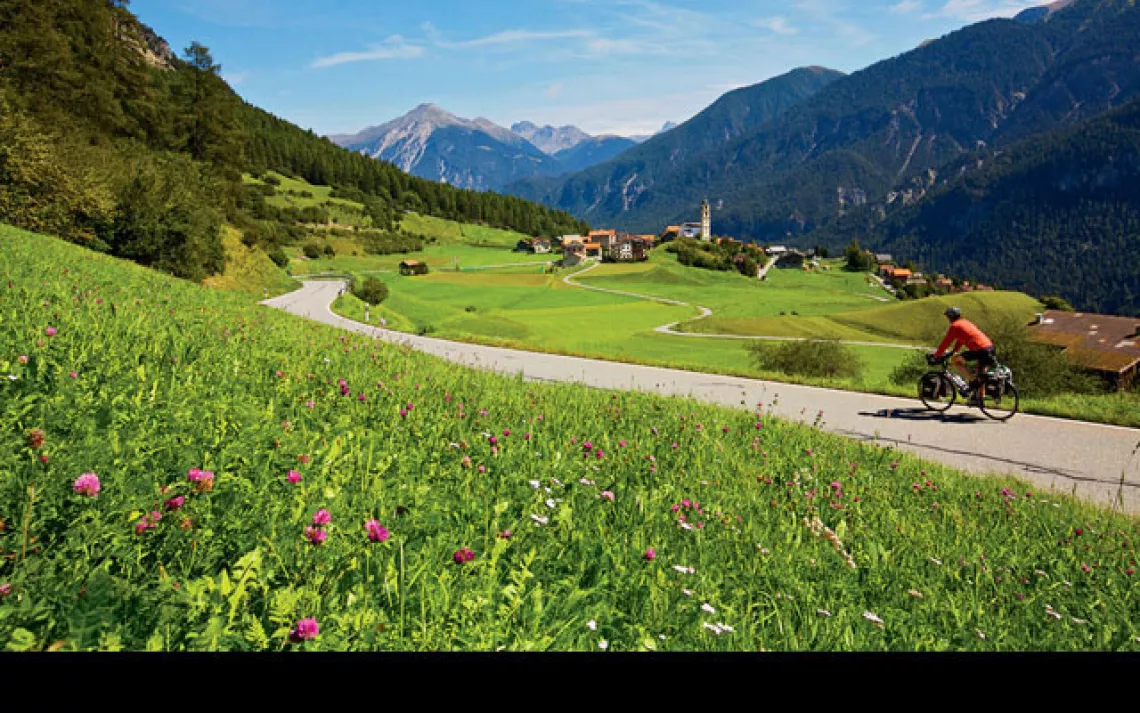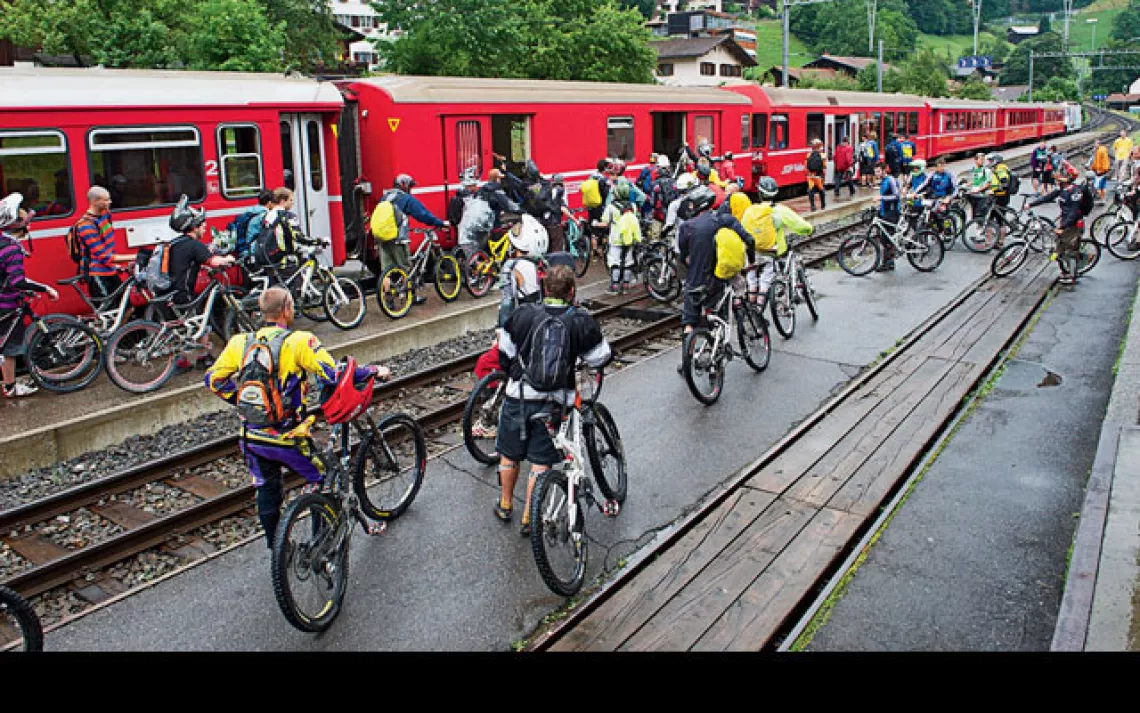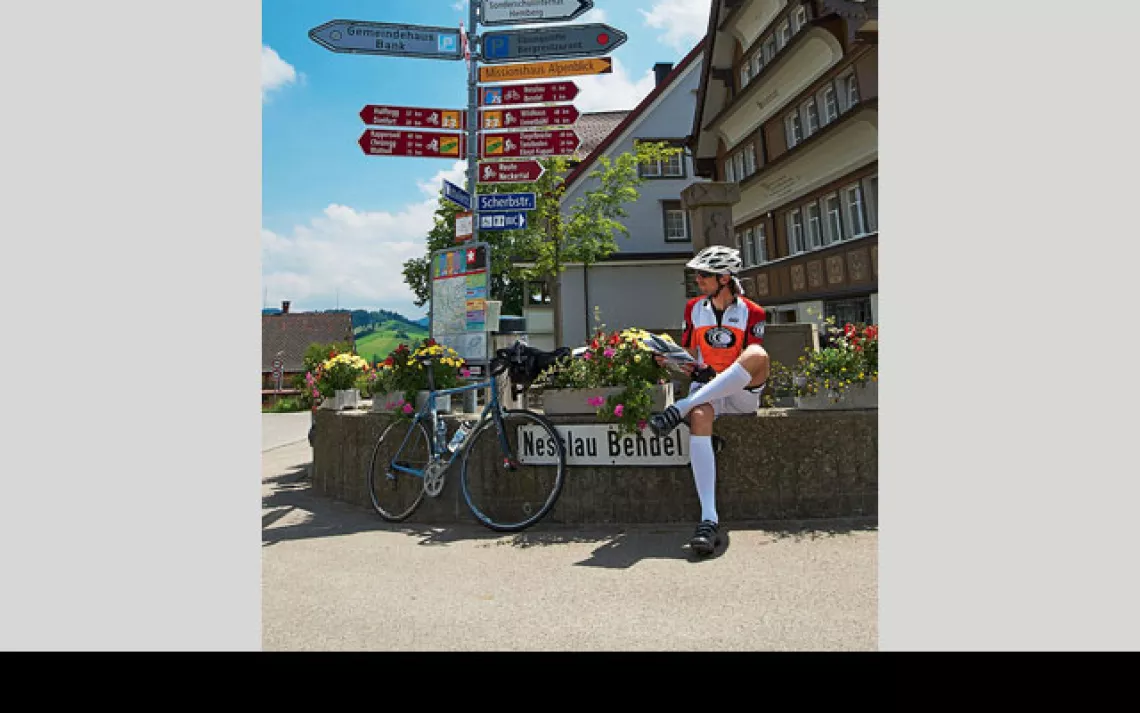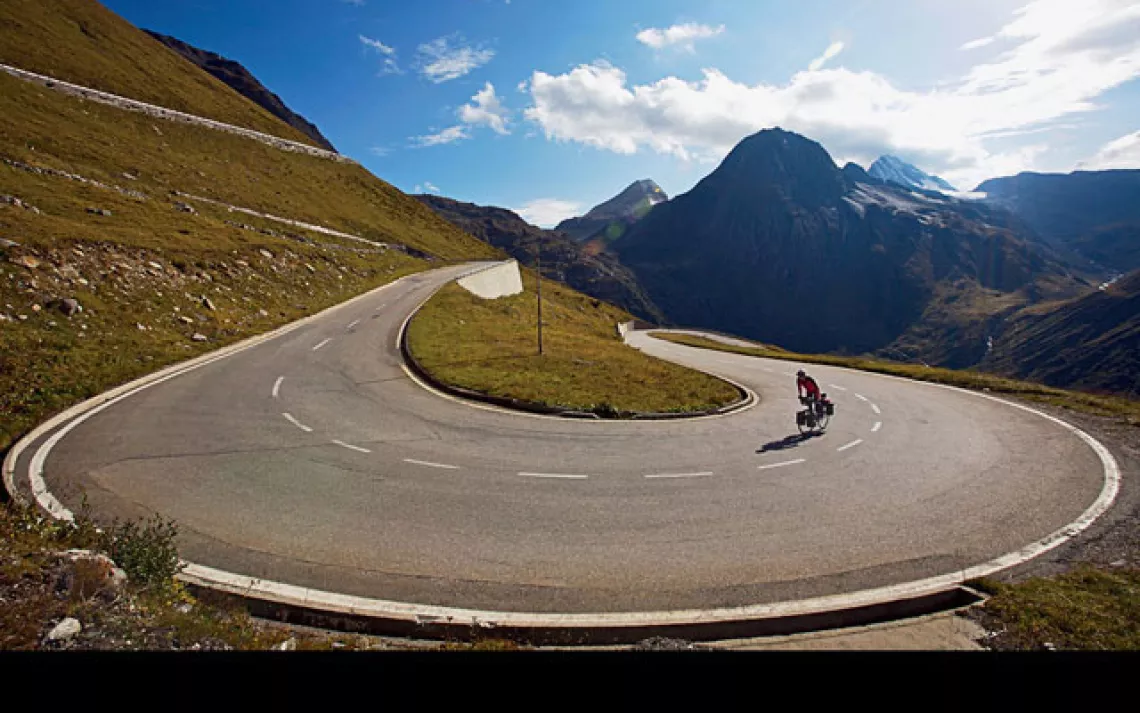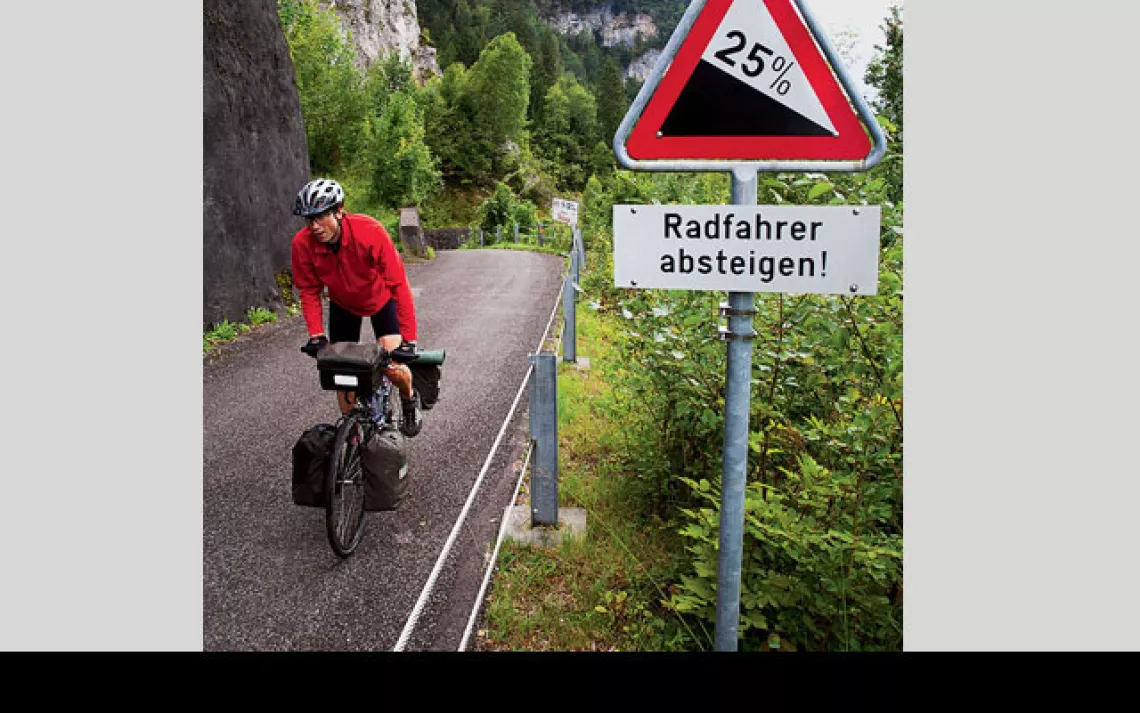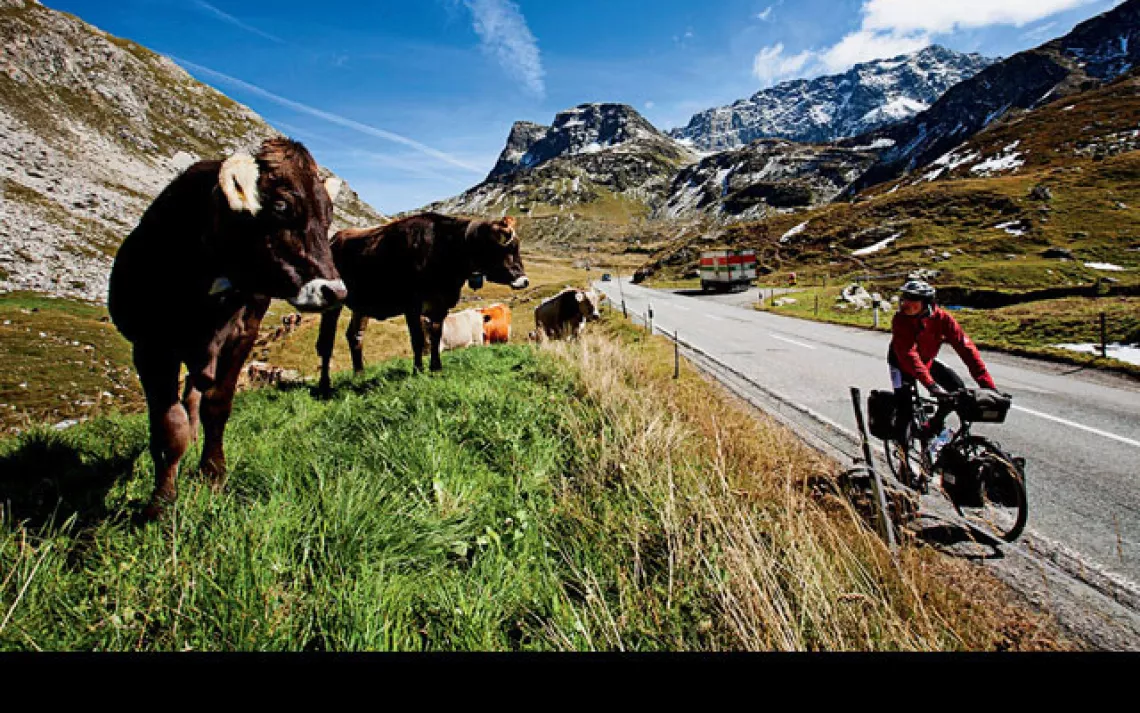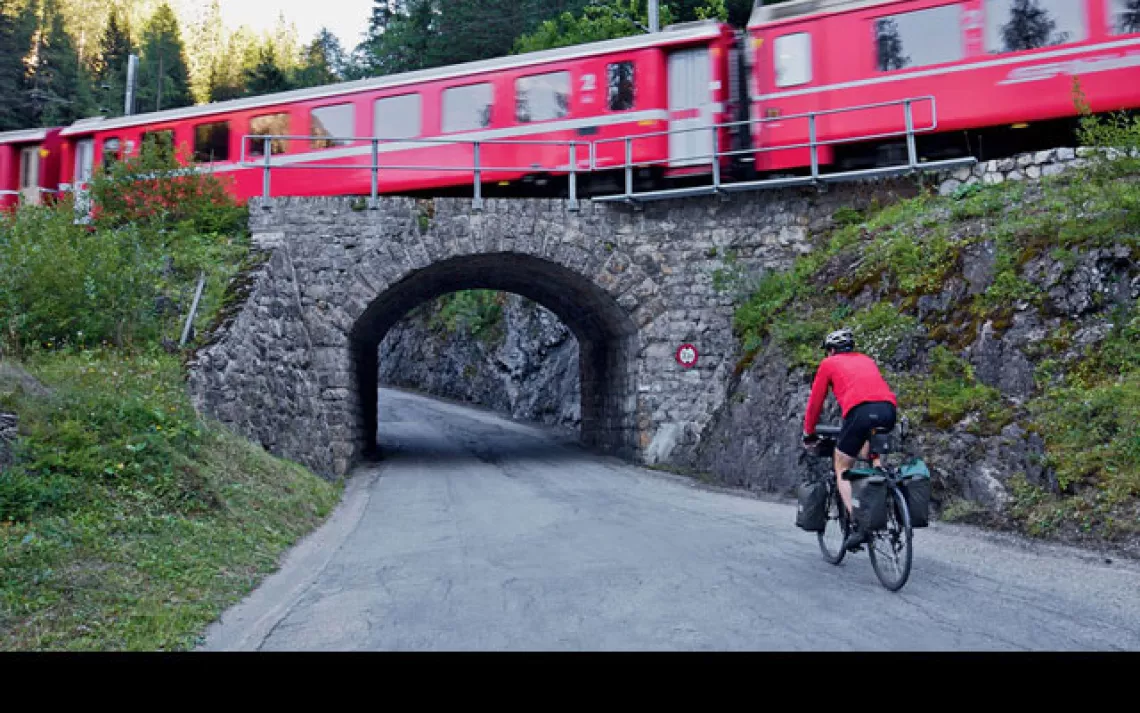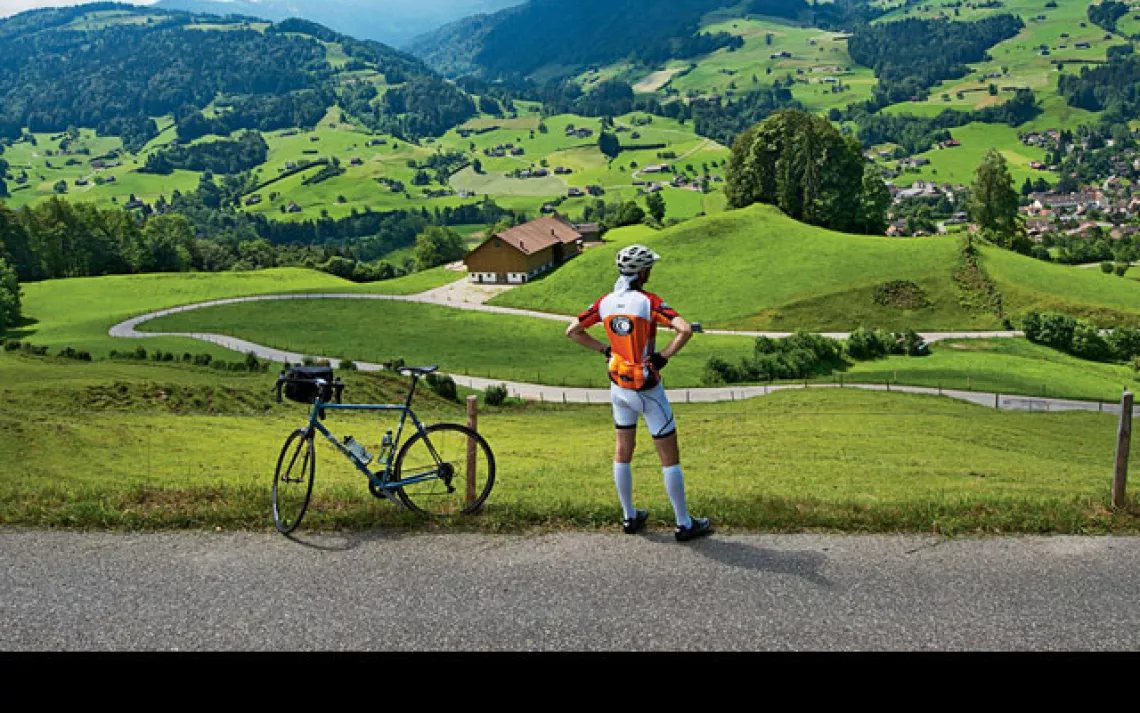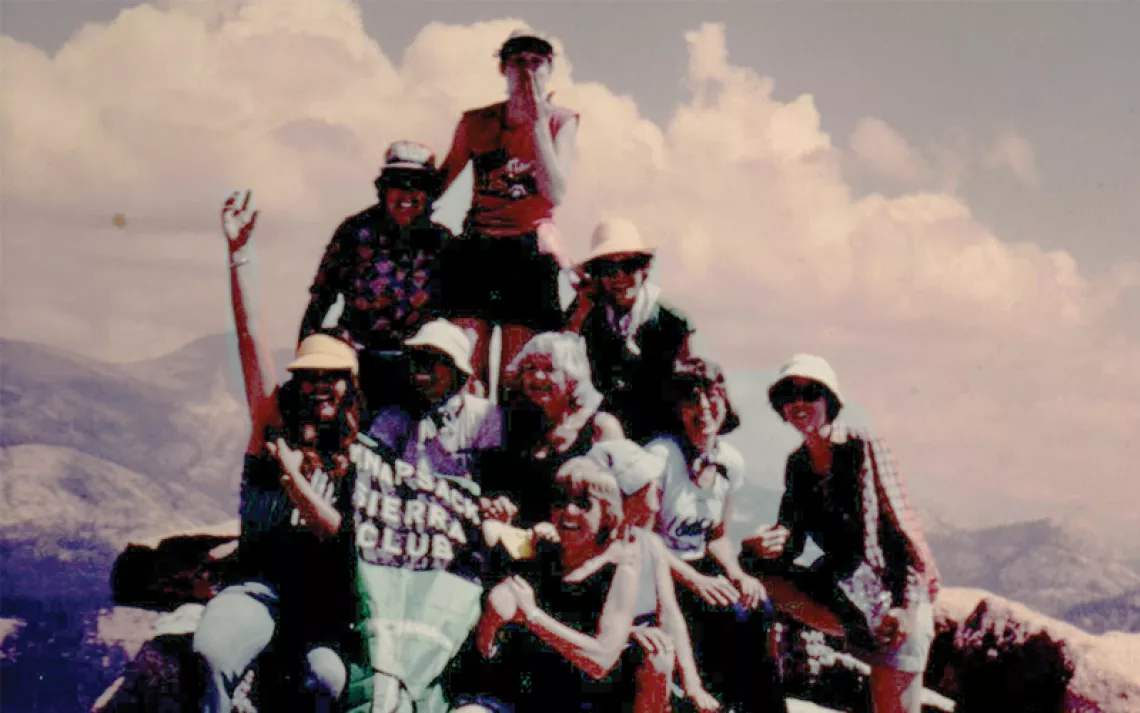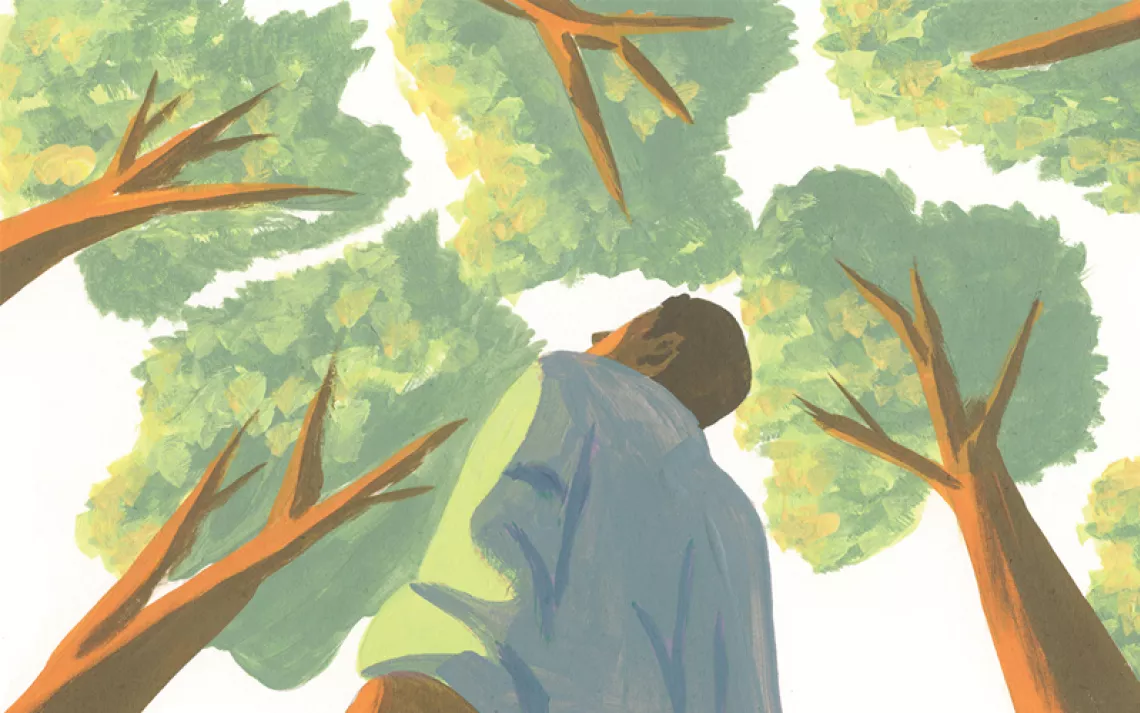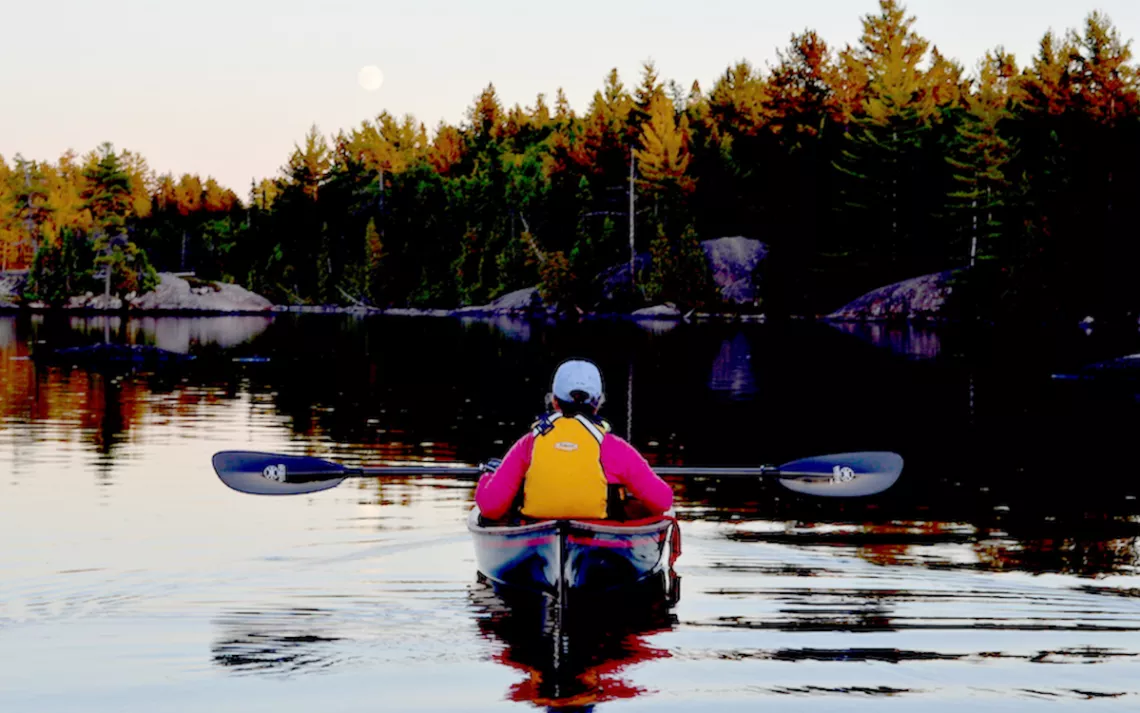Experiments in Swiss Cycling
No panniers, no car, no problem. You can tour Switzerland by lightweight road bike alone—as long as you have legs for the hills.
"What a miserable excuse for a dessert." That's how the conversation started, a chance encounter over the moldering chocolate cake at a diner in southern Argentina. "I can't wait to eat some real sweets," lamented Horst Hammerschmidt, the wiry Swiss cyclist seated across from me. We were both at the tail end of separate multi-year bike tours through the Americas in 2007, and the comforts of home life were starting to seep back into our consciousnesses.
"And I can't wait to speed down a pothole-free mountain pass," I said.
Horst flicked some crumbs off the sticky table, rubbed his palms together, leaned forward, and lowered his voice as if he were about to reveal the secret of the universe: "You know, in Switzerland we have exceptional cakes and perfectly paved roads over our mountain passes."
The following summer, with Horst as my guide, I discovered the 5,600-mile Swiss national bike network, with its 9 national, 53 regional, and 59 local road bike routes. Starting in Zurich, we trundled loaded touring bikes on a 12-day, 525-mile horseshoe-shaped loop over 14 of the country's iconic passes, for a total of 55,000 feet of vertical gain—the equivalent of cycling up Everest twice. Our caloric expenditure was rewarded with cakes, tortes, muffins, and chocolate bars from the roadside cafes that marked the top of most climbs. We dubbed the trip Sweet Passes, and although each winding series of switchbacks made my legs feel like spaetzli, the sweeping descents down pool table-smooth tarmac amply fulfilled Horst's promise.
Four years later, I returned to Switzerland to cover the Tour de Suisse for VeloNews. I'd just driven 5,000 miles covering bike races in Italy and was keen to lighten my carbon footprint, avoid $8-a-gallon gas, and get my cycling legs back. On the Sweet Passes trip, I'd discovered that the Swiss national bike network was neatly integrated with the country's train system, and that for $10 a day I could toss my bike on any train in the country. Would it be possible to cover a multiday cycling race using only Swiss trains and my bicycle? Could I kiss the car uf Widerluege (goodbye)?
I put the notion to the test after the race's first stage, in Lugano, aiming my handlebars north toward Zurich. Rather than chase the race from point to point, I based myself in a small village called Rueti, which had easy access to a train station and feeder lanes to the bike network. From this hub, I'd hop a train to the starting point of each stage and then pedal ahead on the race route until I found a scenic spot from which to shoot the passing peloton. Then I'd either catch a train to the finish or ride the bike trail back to Rueti. The experiment worked through four race stages, eight train segments, and 240 miles of cycling through the glorious Swiss countryside.
Last autumn I returned once again to further refine my Swiss cycling model. Huffing up huge climbs with heavy panniers during the Sweet Passes trip had been a drag, so I wondered whether I could ditch the luggage altogether. I also wanted to stay in a new place each night rather than circle back to the same base town, as I had during the Tour de Suisse. The solution was SwissTrails, a transportation service that shuttles luggage between accommodations along the national bike network. I worked with its founder, Ruedi Jaisli, to plot a weeklong tour ending in a different location every day. I simply left my luggage in the hotel lobby on my way out the door each morning, and it was waiting behind the front desk of my next hotel by day's end. I used the train to portage over less interesting parts of the country. The result was a cycle tour with a side of intelligent public transit support. It was, perhaps, the pinnacle of two-wheel touring. In Switzerland, it turns out, you can have your cake and earn it too.
 The Magazine of The Sierra Club
The Magazine of The Sierra Club
